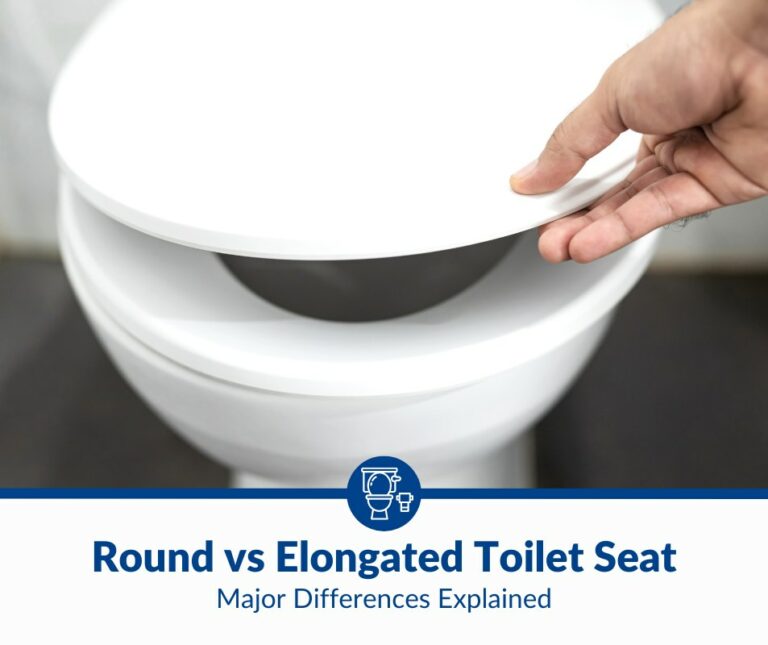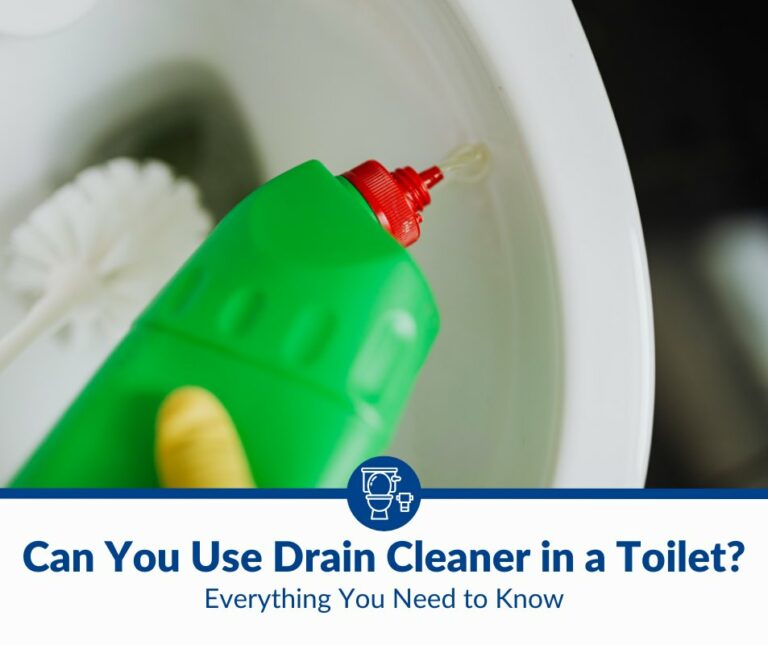Toilet Tank Filling Slowly? 8 Quick Solutions
It can be frustrating if your toilet tank takes more than its usual 3 minutes or so to fill up. Not only do you have to hear the toilet running for an extended period, but you also may not be able to use it as often while you wait. Thankfully, we have some easy, quick solutions that can get your tank filling up quickly again.
If your toilet tank is filling slowly, you may need to check the water shut-off to ensure it is completely open. You should also check for blockages, clean the fill valve, and look for potential leaks.
Let’s discuss these quick and easy solutions and get your toilet running better in no time.
1. Open the Water Shut-Off Valve Completely
Regardless of your toilet type or brand, there will be an external valve toward the bottom left. This is the shut-off valve, and you can use it to shut off the water supply to your toilet’s tank when you need to carry out repairs and clean it.
This should always be the first thing you check when dealing with a slow-filling toilet because it is the easiest fix.
The valve is located on a pipe that emerges from the wall to your toilet tank. Turning the valve clockwise closes the water supply ensuring no water reaches your tank. You should, therefore, turn it in an anticlockwise direction so that it’s fully open and allows the water to enter the tank.
Whether accidentally left that way by a plumber, turned by a child, or moved over time with use, the valve may only allow some water into the valve but not enough for it to fill the toilet tank at its normal rate. If this is the issue, make sure you check the valve regularly to ensure that no one is messing with it to keep your toilet working.
2. Blocked Pipe
If your toilet fills slower than normal, it can indicate a partially blocked pipe. A full block would not go unnoticed as the toilet would not fill at all. However, a partial blockage can lead to the toilet filling up slower as less water makes it through the pipe.
A blocked pipe is a common cause of a slow-filling toilet tank, but you may also notice some other symptoms. If you have a blocked pipe, you may notice a strange gurgling sound when the toilet attempts to fill up. This is the water struggling to get through the blockage. You may also notice a foul, sour smell in more severe cases.
Thankfully, there is something you can do besides call a plumber and wait. First, turn off the water supply to your home. Then, look around for a small, white pipe. It will be only a few inches, but you can recognize it by the cap on top. If you unscrew this cap, it may release the pressure of the blocked pipe, allowing the blockage to make its way through.
Once you do this, replace the cap and turn the water back on. Check your toilet to see if it now fills up faster. You can alternatively consider a chemical cleaner for your pipe if it doesn’t. These enter the pipe and attempt to remove or dissolve blockages allowing water to flow freely again. If you choose this option, read the directions carefully and take every recommended safety precaution.
3. Check the Water Supply Line
A quick way to determine if the problem lies with the water supply or within your toilet is to check the water supply line. To do this, turn off the water supply valve (turn it clockwise) to stop the water from attempting to enter your toilet.
You will need a large bucket (or another similar container) to catch the water in, but you want to allow water to flow from the supply line and into the bucket. This can help you understand just how fast or slow the water is coming through the pipes.
Ensure you carefully direct the water into a bucket, or you may be dealing with a flooded bathroom before you finish. Once the bucket is ready to go, open the supply valve all the way, allowing water to rush back through and into the bucket.
You should be able to tell from the speed at which the water comes out whether or not the problem lies with your water supply or the toilet itself. It should come through pretty quickly, as if you turned on the bathtub faucet or the sink.
If you notice it is slow, it is an issue with the supply itself. But don’t give up yet. Some quick potential fixes still don’t require paying a plumber.
4. Clean the Fill Valve
The fill valve is an important part of your toilet as it is responsible for filling the toilet tank after you flush. If the tank fills slowly, you may be dealing with a dirty fill valve. Toilet fill valves tend to gather mineral buildup on their exterior, which can greatly impact their performance.
To fix this, start by shutting off the water supply in the toilet and removing the fill valve from the toilet tank. Inspect the valve for any serious damage or rust. If the valve has neither, you will need to replace it. Otherwise, a good cleaning should take care of the delay.
There are a couple of different ways to clean the valve, depending on how bad the mineral buildup is. First, try cleaning it with warm, soapy water. Let it soak in the mixture to help remove some of the build-up or work it into the valve with a cloth. When finished, ensure you rinse it thoroughly, as you should not leave soap on it.
Alternatively, you may be facing some tougher mineral buildup that the previous method can’t fix. If this is the case, use white vinegar and scrub it into the problem areas of the valve with a toothbrush. This will allow you to reach tight areas and scrub the remaining minerals off.
If neither option cleans the valve, even after repeating them, you should consider replacing it. Sometimes the buildup gets too bad if you leave it for too long. Thankfully, these valves are relatively inexpensive. So, replace it if the buildup won’t come off with the above steps.
5. Clean the Toilet Air Vent
If your toilet tank is filling slowly, it may be due to the water coming through the pipes slower than it used to. This can happen for several reasons, but it is especially common with a blocked air vent.
The water inside of pipes needs air to move. Without it, the water would remain stagnant. The pipes that send water to your toilet tank are no exception. There is an air vent that pushes air into the pipes allowing water to move and smells to escape. If it stops working or becomes clogged, you may experience a slow-filling toilet with the loss of water pressure.
To fix this, you will need to first locate the air vent. You can find this vent on the roof of your home, as this allows smells to escape the vent without affecting the rest of the house. Alternatively, some homes may have these vents placed on the side of the house, but this is less common.
Once you find the air vent, you will need to see if there is a clog. If you smell a distinct sewer smell in your home, that can be a huge indication of a clog because the smells that usually escape through the vent remain in the pipes instead.
Alternatively, gurgling sounds from the bathroom sink and noises from the sink or bathtub when you flush the toilet are common signs of air vent problems. Finally, reach the air vent, place a hand over it, and have someone flush the toilet. If you do not feel the vent attempting to pull in air from the outside, then you are dealing with a clog.
There are a few ways to fix this, and how you do it depends on where the clog is. Start at the vent on your roof, and attempt to unclog it with a drain snake. We recommend investing in a good-quality drain snake for this, as you may need to go pretty far down into the drain to reach the clog.
If you need to do this from the interior to reach the clog, you may need to put in some extra elbow grease to get it done. Find the air vent pipe right above your bathroom, usually located in the attic of your home. Once you find the pipe, if it is a PVC pipe and not metal, you can cut the pipe to reach the clog. Use the same drain snake and find the clog.
Once you do find and clear the clog, you will need to repair the pipe. We only recommend cutting the pipe if it is PVC because it is a lot easier to repair. All you need is a pipe coupling to put it back together. This will also give you easy access to the pipe should you need to unclog it again.
6. Sinking Float Ball
In your toilet tank, you have a float ball or column that is responsible for determining the water level. This float prevents the toilet tank from overflowing by telling it to stop filling up once it reaches a certain level. This float should always be on top of the water in the toilet tank. If it isn’t, that is probably why your tank is filling so slowly.
The float ball follows the water level when you flush the toilet and empty the toilet tank. So, it will fall to the bottom of the toilet tank and rise again as the water level rises. If the float does not rise with the water, it will not indicate to the fill valve that the toilet tank is full. This will result in your toilet constantly running and gradually filling up with water.
If this happens, you should replace the ball float. Not only is this cheap to replace, but it is also easy. Start by turning off the water to the toilet and removing the float from the arm. If it is not floating properly, you will probably notice some damage to it. Then, replace it with a new float, sticking it in place of the old one.
As you turn the water to the toilet back on and flush it, watch how the float reacts to the water. Rather than remaining low and submerged in the tank, it should now float near the top of the water.
It’s good to note that the ball float functions perfectly well but is considered an old-fashioned toilet part. If you continue to have problems with your ball float, you may consider upgrading your internal toilet system. However, if this is just a one-time problem, there is nothing wrong with having a ball float.
7. Replace the Flapper
All toilet tanks have a flapper, which is a rubber part that enables water to enter into the bowl and prevent it from doing so. If the flapper warps or tears over time, it can continue to allow water to flow into the toilet bowl even when it is full. This is usually a slow drip and can be difficult to notice until the tank keeps refilling.
Because the water is leaking from the toilet tank slowly, the tank itself will fill slowly throughout the day as it catches up with the water slowly flowing into the bowl. Thankfully this is a pretty easy fix and involves replacing the flapper.
However, you should find a suitable flapper replacement. Thankfully, there are quite a few options to choose from. So, you must ensure that you get the right size for your toilet. There are also some different materials to choose from. We always recommend rubber as it lasts a long time and seems to have a better, tighter hold.
Once you have your new flapper, turn off the water to the toilet and flush it to remove the water from the tank. Connect the new flapper to the chain by hooking it into the hold provided in the flapper. Once you install the new flapper, ensure the chain is tight. If the chain is loose or has too much give, make sure you tighten it, or it can cause further problems when flushing.
8. Replace the Fill Valve
If your toilet tank is not filling as quickly as it used to, you may need to replace the fill valve. Fill valves are not very expensive and fairly easy to install. If enough minerals or rust gather on the valve that you aren’t able to clean it, you should replace it.
The fill valve usually lasts for quite a while in toilets, but many things can go wrong with years of use. While mineral buildup is a normal part of plumbing, rust can also come into play. The tricky part about dealing with rust is that it can very quickly change how well the valve is performing.
If the mineral buildup is the only concern, then washing it should be enough. If there is too much buildup for soap or vinegar to get through or there is rust, replace the valve. This is the best way to ensure that your toilet is not using too much water and flushes efficiently.
To remove the fill valve, you will need to remove the valve nut, which can be difficult. You may need pliers to do this as the nut can be tough to loosen, especially if there is rust built up.
Once you have your new fill valve, you will most likely need to adjust it. Toilets come in many different sizes. So, there is no standard length for a fill valve that will work for every toilet. When placed in the tank, you want it to be about an inch taller than the overflow tube. Once you have the right length, install the new valve reconnecting it to the water supply line.
Most fill valves are the same, but some may vary with specific instructions. Make sure you follow the installation directions included with the valve you purchase. Otherwise, it may not work properly, or it can interfere with other parts of your toilet.
Final Thoughts
A slow-filling toilet tank can be annoying, but it can also be indicative of many different potential issues. Whether it is a piping issue or a problem within the toilet, there is a lot you can do to try to fix it without needing to call a plumber.
Try out these quick solutions for fixing your toilet. If these aren’t enough to stop it, then you may want to consider calling a plumber to see if it is a larger issue. Many different things can go wrong with a toilet. Thankfully, there are many cheap, quick solutions.







